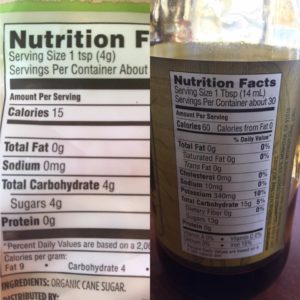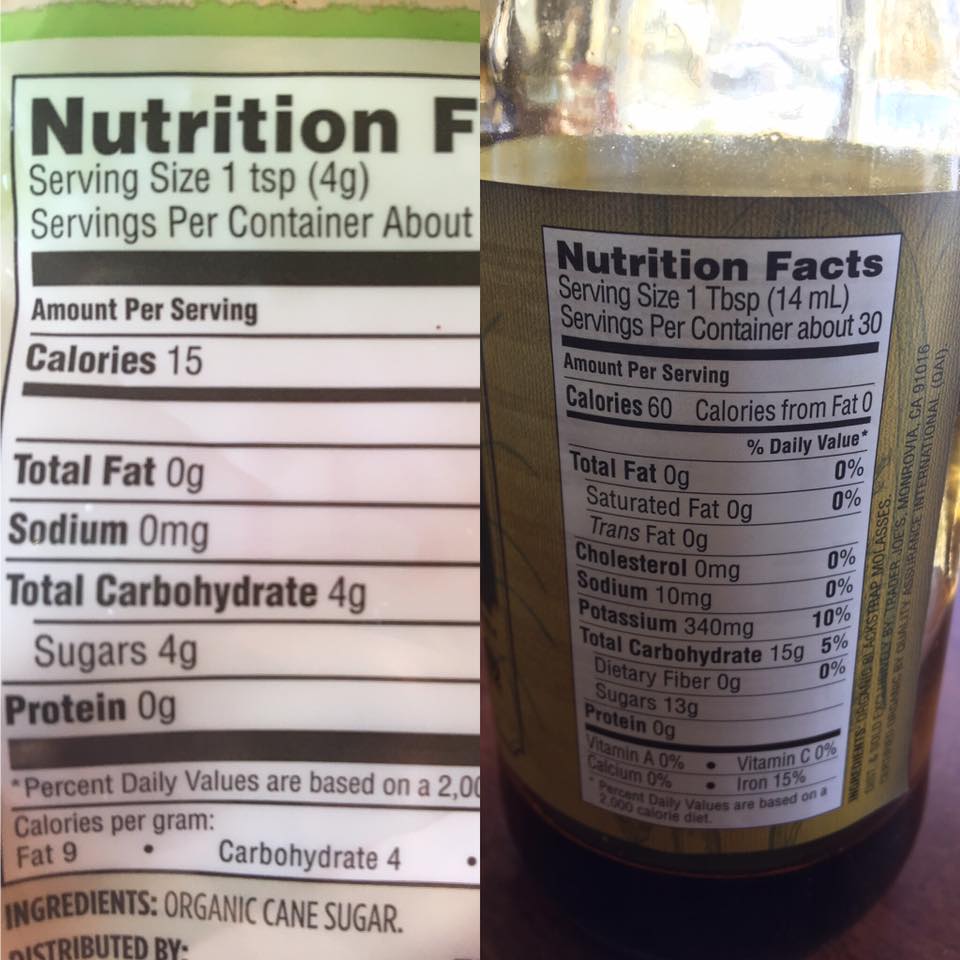HOW TO UNCOVER SECRET INFO IN FOOD LABELS & WHAT THEY ARE KEEPING FROM YOU
How many of you have hopped on the band wagon of carb counting? As a practicing physician with a background in nutritional biochemistry, I can tell you that carb counting is not all it’s cracked up to be. In general, food labeling laws don’t provide consumers the whole story.
Let’s take a deeper dive to understand how you can be led astray from foods with tremendous nutritional value when you rely only on the carb counting method. When looking at these two labels, you can see similarities and differences. The one on the left is organic cane sugar, the right is BLACKSTRAP MOLASSES.

You first need to convert to the same serving size. 1 tablespoon equals 3 teaspoons, so you need to divide the molasses by 3 because the serving size is listed as a tablespoon, while the sugar is only 1 teaspoon.
If you look at the fat, carbs and protein like most of us do, they are pretty similar–you do need to take into account that we are comparing a liquid and a solid. So there is space between the grains of sugar contained in the teaspoon, while the molasses completely fills the space.
The secrets start to get revealed when you see some of the mineral content listed. There’s nothing else listed for the cane sugar, while there are significant amounts of potassium and iron in the molasses. In fact, Blackstrap molasses has historically been used to keep iron levels up during pregnancy. These minerals are essential for metabolism and there are many more contained in molasses but food labeling does not require that they get listed. For example, the copper content is partly responsible for its beneficial effects on grey hair.
What else is missing? If you have been following me for a while you might have already guessed–the phytochemicals! These powerhouses are also not required to be listed on the label. Blackstrap molasses (BSM) is the richest source of polyphenols of all the sweeteners and this is where the magic of this liquid gold lies.
If you think about it, BSM is a beautiful deep brown-black color–what is that? It’s not the sugar, it’s the phytochemicals. And here’s the secret in selecting foods that speak to your DNA.
Please share this post spread this information. More people should know about this. Also please subscribe for exclusive content from me on www.drstagg.com

